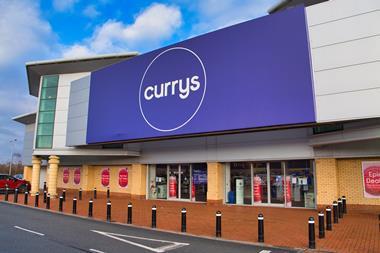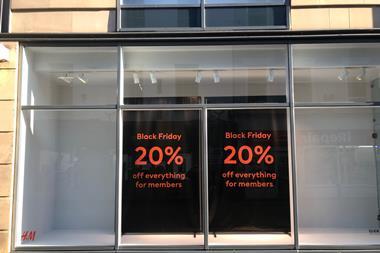With so much choice on the web, retailers must give people a reason to pick them, says David Wild
The shopping experience is a constant focus for retailers. We aim to look after all aspects of a store visit to deliver customer satisfaction, differentiation and competitive advantage.
The growth of online shopping throws up new challenges on how to achieve that great experience.
Online, customers may have very little contact with the retailer. A purchase can consist of no more than a simple click on a website and a delivery by a third party. So the traditional demonstration of customer care through our colleagues
is limited.
Some product purchases don’t require any personal interaction. Music and book sales have been transformed. Not only can customers research and shop online, they can also listen to samples and download without any human contact at all.
They don’t have to leave the couch where they are browsing on their iPad or reading their Kindle – there are simply no bricks or store colleagues needed.
The growth of online is phenomenal. According to IMRG data, UK online spending grew by 17.6% to reach a total of £58.6bn in 2010. A third of consumers now buy online once a month and 59% promise to shop more online in the next two to three years, PwC found.
The economic climate is accelerating the trend and the new reality is that most shopping trips have an online element somewhere, if not a purchase, then product research. Halfords’ own stats show people are researching more online before buying.
So it’s essential that we, as retailers, invest in an online infrastructure that gives a seamless, smooth customer experience, with the right amount of information on our products and opportunities for feedback and interaction. We must ensure that our leading reputation for customer satisfaction in-store is as polished online.
Supermarkets know that the drop-off is one of the most important interfaces of their home delivery services and drivers receive special training. What happens on the doorstep can make the difference to a customer choosing which shop to use next time.
As the indicators of a good shopping experience are changing, Halfords has responded by introducing a ‘standard signature’ to deliveries, which means that neighbours can sign for packages, as well as the consignee. This has improved first-time delivery rates considerably.
There’s also another phenomenon at work. Customers are now self-selecting the form of delivery according to the amount of extra service or convenience they need around the product. At Halfords, more customers select store delivery for products that benefit from further advice, service or fitting.
Over 85% of our digital transactions involve a visit to the store to collect the product that has been reserved online. We believe that this gives us a great opportunity to enhance the online shopping experience by ensuring that the customer is fully satisfied with
the product.
In some cases, we fit the product or we build the bike. It means that our store colleagues are an integral part of online shopping. We hope, too, that customers who are happy with the experience will shop with us again.
British retailers have an enviable reputation as shopkeepers, but we must work hard to earn the same plaudits as etailers.
- David Wild is chief executive of Halfords


























No comments yet